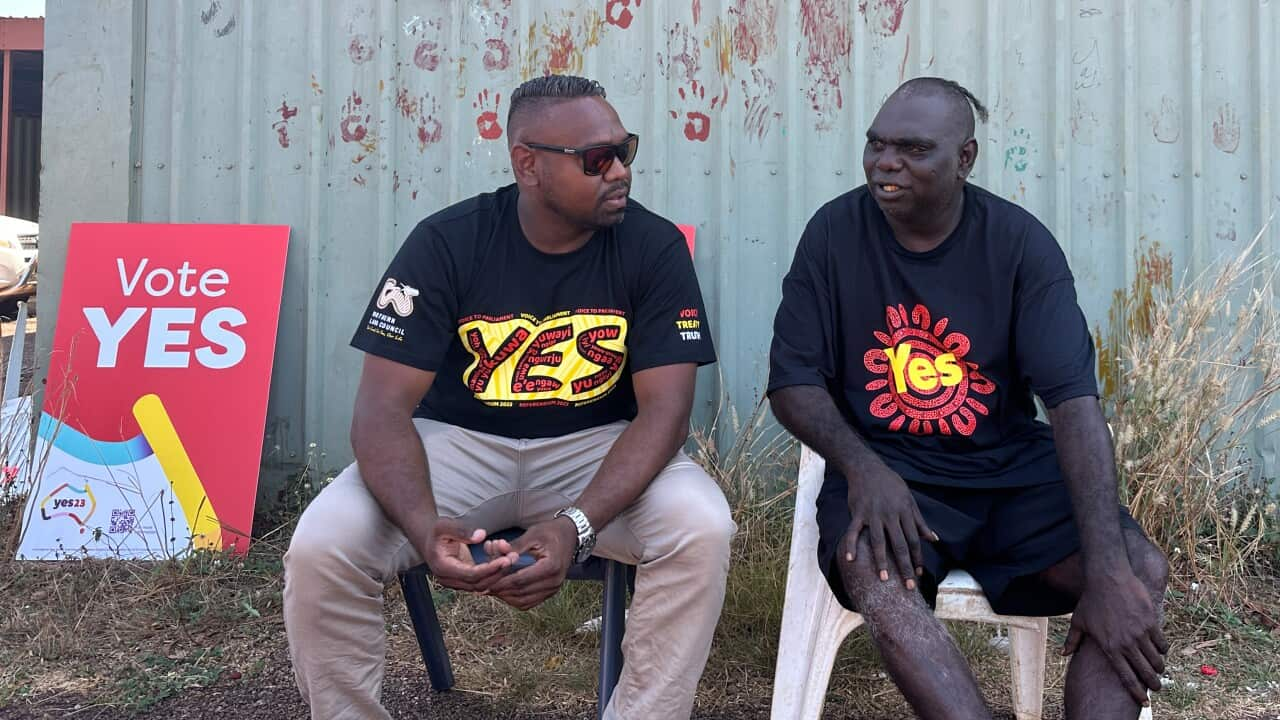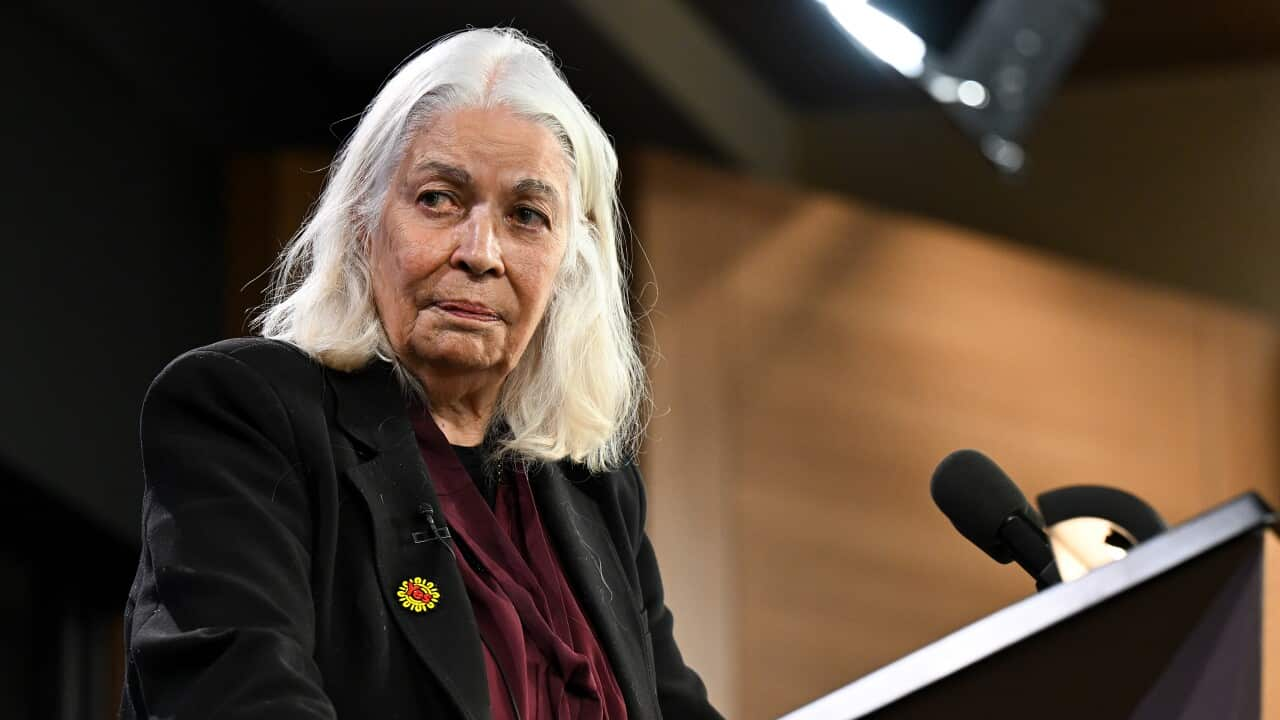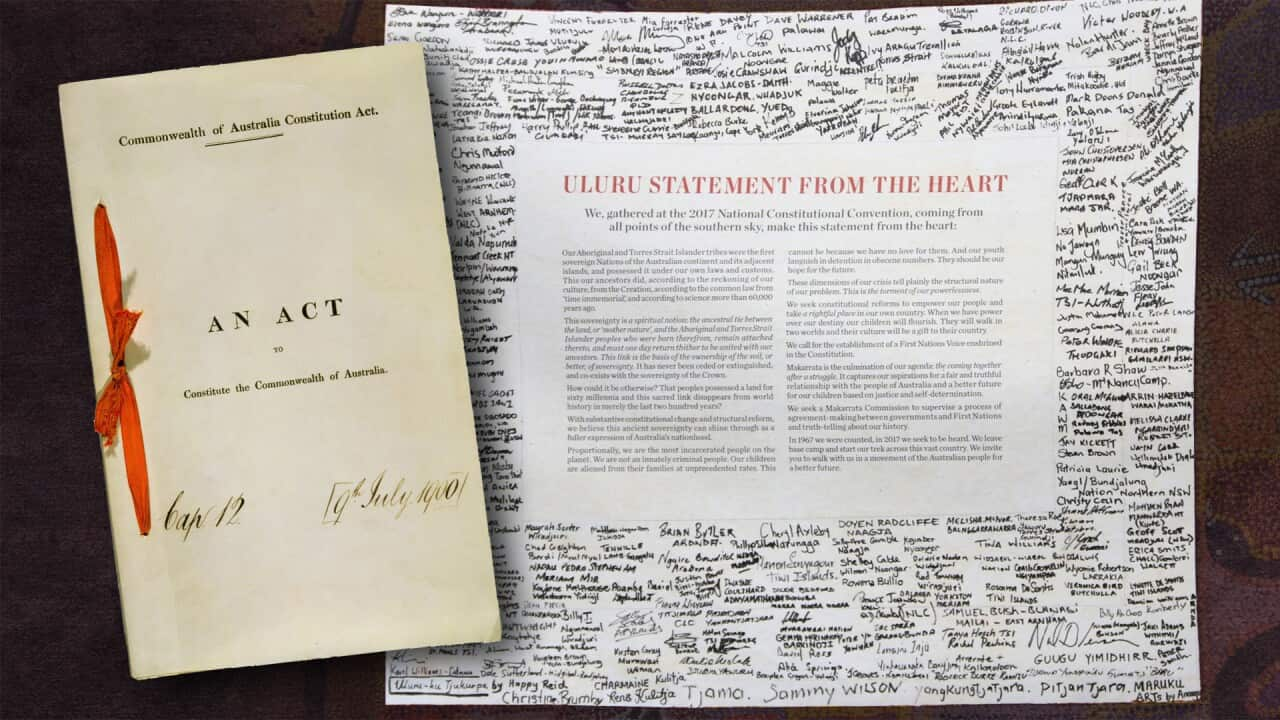The polls are open and people will be casting their votes until 6pm on Saturday.
The final results will determine whether the country establishes an Aboriginal and Torres Strait Islander Voice to Parliament.
Thousands of Yes and No campaigners are flooding the streets trying to sway undecided voters before they reach the booths.
But many are still confused about what the Voice is, what it will do and where it all came from.
Where did the Voice come from?
The Voice to Parliament isn't a government-created idea, but rather the first step outlined in the Uluru Statement from the Heart.
The statement, created in 2017, was the culmination of the First Nations Dialogues: six months of consultations with communities around the country, which led to a gathering of over 250 Aboriginal and Torres Strait Islander delegates at Uluru, where the statement was written.
The document requests the Voice as the first reform, followed by Treaty and Truth.
"We seek the constitutional reforms to empower our people and take a rightful place in our own country," it reads.
"When we have power over our destiny, our children will flourish. They will walk in two worlds and their culture will be a gift to their country.
"We call for the establishment of a First Nations Voice enshrined in the Constitution."
Why does the Voice have to be enshrined?
The Uluru Statement calls for recognition in the constitution via a Voice to Parliament. To change to constitution, a referendum must be held.
If the referendum is successful, , then the constitution can be amended with the proposed changes.
Enshrining the voice in the constitution, as opposed to legislating it, would set a much higher bar for getting rid of it again (namely, another referendum).
In September, Peter Dutton suggested, if this referendum fails, the Coalition could hold a second one, providing they win the next election.
His referendum would only seek to give symbolic recognition to First Nations people in the constitution.
In her Press Club address, Professor Marcia Langton said she wasn't interested in working with Dutton on the proposed second referendum.
"It's not what we want," she said.
"As Peter Dutton outlined the purpose of his referendum, or to the extent that he did, is not what we have asked for."
Enshrining the Voice into the Constitution means it can withstand changing governments.
According to prime minister Anthony Albanese, that's "precisely why Indigenous Australians have asked that it be enshrined".
"We’re dealing with intergenerational issues. And it won’t be solved in a week, a month, a year. Some of these issues will take a long period of time,” he told Sky News in August.
“They want that security of that enshrinement so that they won’t put all their effort into something where it can just be gone in a stroke of a pen. It’s also the form of recognition that Indigenous people have asked for."

Prime Minister Anthony Albanese casts his vote with his son Nathan in the referendum for an Aboriginal and Torres Strait Islander Voice to Parliament at Marrickville Town Hall in Sydney. Source: AAP / Michelle Haywood/AAP Image
What are the changes to the Constitution?
Prior to 1967, Aboriginal and Torres Strait Islander peoples were not mentioned in the Constitution.
The Constitution was amended after the successful 1967 referendum to allow the Commonwealth to make laws in relation to Aboriginal and Torres Strait Islander people. It also meant inclusion in the census.
But, the change did not recognise Aboriginal and Torres Strait Islander peoples as First Peoples.
A successful referendum this year will see Aboriginal and Torres Strait Islander peoples have both that recognition and a Voice to Parliament written into the Constitution.
The proposed changes to the constitution are as follows:
Chapter IX Recognition of Aboriginal and Torres Strait Islander Peoples 129 Aboriginal and Torres Strait Islander Voice
In recognition of Aboriginal and Torres Strait Islander peoples as First Peoples of Australia:
1. There shall be a body, to be called Aboriginal and Torres Strait Islander Voice.
2. The Aboriginal and Torres Strait Islander Voice may make representations to Parliament and the executive government on matters relating to Aboriginal and Torres Strait Islander peoples.
3. The Parliament shall, subject to this constitution, have power to make laws with respect to the composition, functions, powers and procedures of the Aboriginal and Torres Strait Islander Voice.
How will the Voice be set up?
The Voice, in its simplest form, would be an advisory body that provides advice to parliament and government on issues affecting Aboriginal and Torres Strait Islander peoples and communities.
It would have a special focus on health, housing, education and jobs, according to the Minister for Indigenous Australians, Linda Burney.
The detail that exists on the Voice comes from the comprehensive report co-authored by Professors Tom Calma and Marcia Langton.
Two members from each state and territory, and the Torres Strait, and an additional five members would represent remote areas in the Northern Territory, Western Australia, Queensland, South Australia and New South Wales. There would also be a delegate to represent the mainland Torres Strait Islander population.
The Voice would have two co-chairs which will be elected by the body every second year and members of the Voice would serve four-year terms.
The Voice will also be informed by local and regional communities and have two advisory bodies on youth and disability.
Despite polls consistently showing a majority No vote across the country, Albanese has remained optimistic in public.
"It’s only done when people cast their ballots," Mr Albanese said.
"We'll wait and see when they cast their vote, I'm not getting ahead of the Australian people."
















